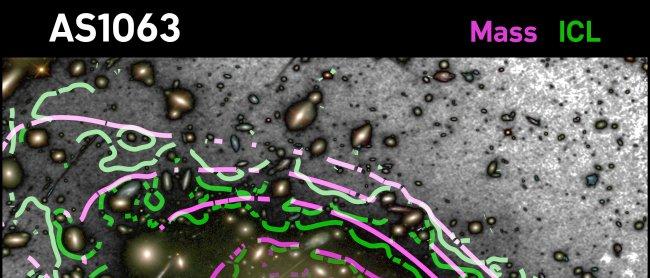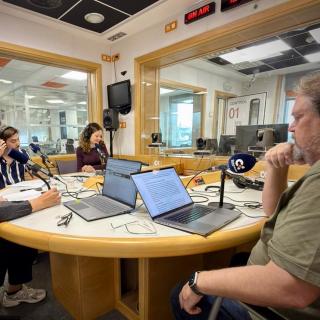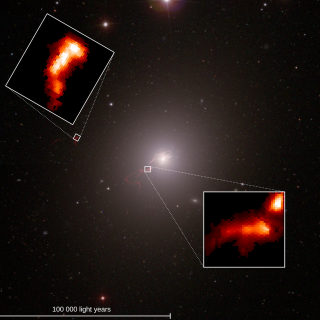Dark matter is that which we cannot observe directly, but which comprises more than four times as much mass as the visible matter in the Universe. Scientists began to notice it after Fritz Zwicky, in the 1930’s, measured the motions of galaxies within clusters. He showed that the velocities were far too large for the gravitational field of the visible matter in the clusters, inferring the presence of large quantity of unseen material.
This component of the universe was then termed “dark matter” because it was thought to comprise ordinary matter which neither emits nor reflects light. Nowadays we understant that it is different, and that it is made up of some exotic substance which is tranparent over the full range of the electromagnetic spectrum, but the name “dark” is still used to name it.
Mireia Montes, a researcher at the Universities of New Sout Wales and Yale, and Ignacio Trujillo a researcher at the IAC and the ULL have published an article in which they relate the distribution of the dark matter to that of the intracluster light. This light does not belong to a specific galaxy, but forms a part of the global structure of the cluster of galaxies.
The study, published in the journal Monthly Notices of the Royal Astronomical Society (MNRAS), is based on six custers of galaxies observed with the Hubble Space Telescope. These six clusters, with hundreds, even thousands of galaxies, were studied using data from the Hubble Frontier Fields programme, in which the distribution of the dark matter was reconstructed using gravitational lensing. This is a complex process in which the mass distribution of large objects is derived from the curvature of the light emitted by more distant galaxies behind them, an effect comparable to that of lenses.
“When we saw how the dark matter was distributed around the cluster” explains Montes, who was a doctoral student at the IAC and the ULL, “we realised that it was similar to that of the intracluster light”. To demonstrate that the two distributions coincide, they used the Hausdorff distance, which is a parameter which establisheds the similarity between two sets of points, and which is used by smartphones in facial recognition programmes.
“We compare the distribution of the intracluster light with those of the dark matter and the X-rays” comments Trujillo “ The first two are identical, within the limits set by the observational data. For the first time we are seeing something whose distribution is the same as that of the dark matter. This will allow us to study its localization more precisely in more clusters of galaxies without the need to use gravitational lensing to make the maps.
The intracluster light fits the dark matter distribution so well because the stars interact minimally with each other.This light is caused by stars which have escaped from the outermost parts of the galaxies in the cluster. These stars then float freely within the cluster under the gravitational attraction of the cluster as a whole. The surface brightness of the intracluster light is extremely low, 100 times fainter that that of the night sky even in the darkest regions of the Earth, such as the Roque de los Muchachos Observatory (Garafía, La Palma).
“As the dark matter and the intracluster light are equally distributed” says Montes “opens the door to the study of the distribution of the dark matter in hundreds of clusters much more efficiently than before”. This discovery will permit advances in our understanding of dark matter, and paves the way for future research in other clusters of galaxies. “Establishing the distribution of the dark matter will help us understnad the origin of this component of nature which is so little known” says Trujillo.
Links of interest:
- Video: Diffuse intra cluster light traces dark matter
- Article: Mireia Montes, Ignacio Trujillo; Intracluster light: a luminous tracer for dark matter in clusters of galaxies, Monthly Notices of the Royal Astronomical Society, Volume 482, Issue 2, 11 January 2019, Pages 2838–2851, https://doi.org/10.1093/mnras/sty2858



